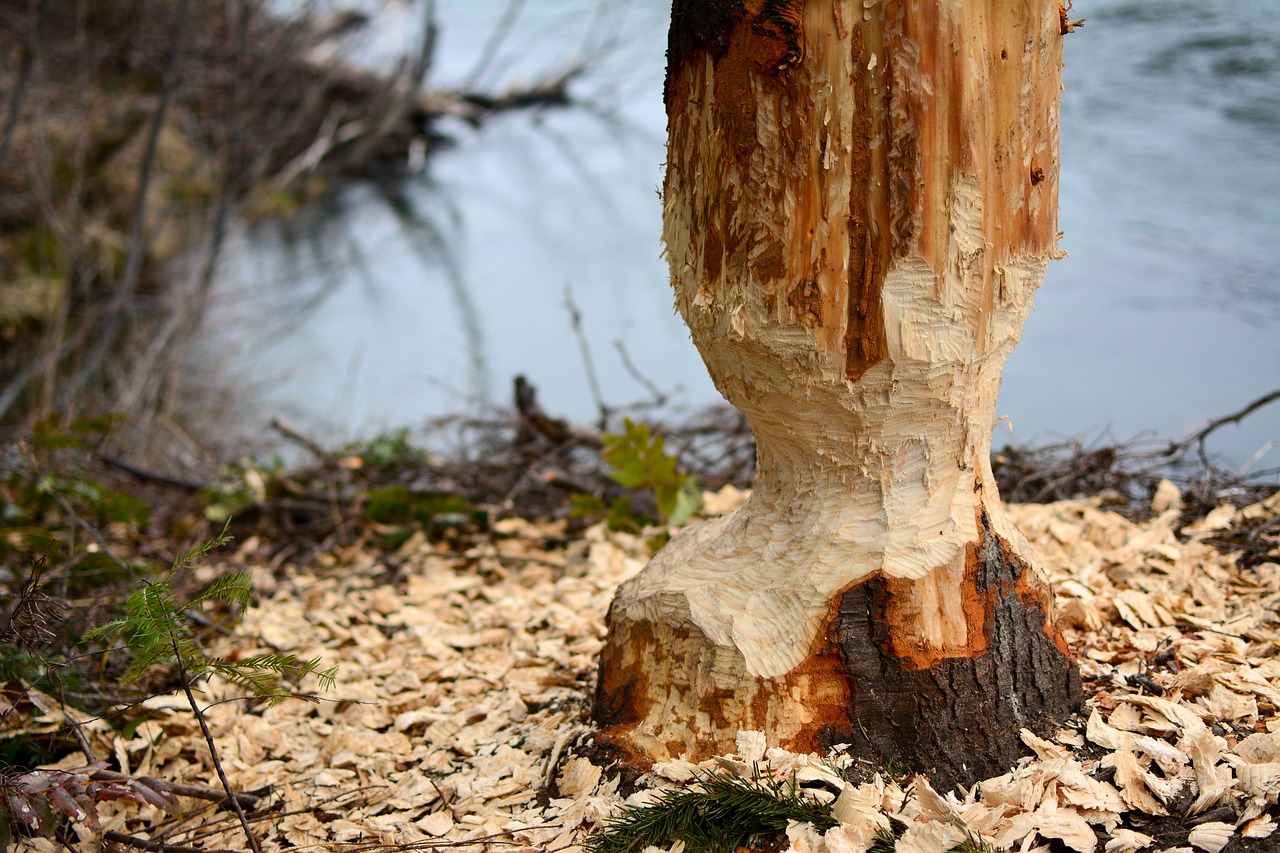Tree cutting is a common on sight in beaver habitat, this is because it is a source of food - as their entire diet is plant based they nibble off the bark, smaller twigs and branches.
As rodents, beavers' teeth will continue to grow over the years and so gnawing on wood and large trees keeps their gnashes in check. Toppling the larger trees is also a clever way to access the branches higher up which would otherwise be out of reach for an animal that doesn't climb. With a preference for tree species such as alder, aspen, birch, cottonwood, poplar and willow, their least favourite options are conifers such as pines and hemlocks.
Once the nutritional aspect has been taken care of, beavers will use sticks and branches to build their dams and lodges, piling them up to stop the flow of water or to create shelter.
You may notice in the Fall, heightened activity surrounding tree cutting. This is because beavers don't hibernate during the winter and are stockpiling cut trees and branches for a food cache to sustain themselves over the coldest period.
What are snags?
Dead trees which have been felled by beavers are called snags. Although these may look unsightly to people, they perform an important function in that they create habitat for a variety other species. Woodpeckers and squirrels can often be seen using these trees as places to perch, create shelter or find food.
Can I protect my trees?
Protecting trees from beaver activity is a common concern by property owners as felled trees may cause a risk to people, infrastructure, and livelihood. Although beaver trapping is a legal option, there are easy, inexpensive ways of protecting selected trees by tree wrapping without removing beavers or destroying wetland habitat.
Contact our team today, our specialists who work with human-beaver co-existence are ready to help.


